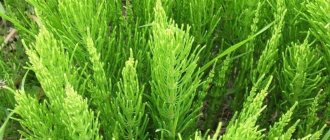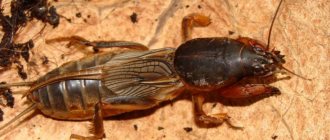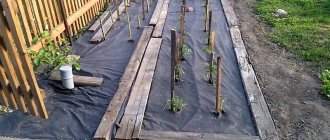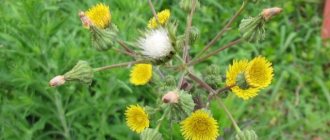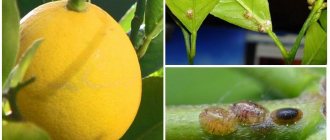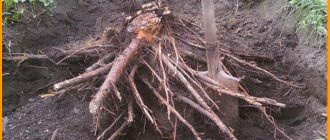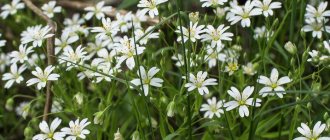During the period of growing vegetables in the garden, gardeners are forced to deal with weeds. A plot with a lot of weeds cannot produce a good harvest. After all, they also require sun, water and nutrients. Therefore, the more weeds, the fewer useful elements the cultivated plants receive. Methods for controlling “green pests” of different types differ. This article is devoted to ways to rid an area of birch weed.
This is what people call field bindweed, which can fill a large area in a matter of days. Birch belongs to the category of perennial climbing plants, growing very quickly and difficult to remove.
Description of field bindweed
The field bindweed plant (Convolvulus arvensis) or as it is also called “birch” is a climbing representative with a branching rhizome. The culture belongs to the Bindweed family; there are more than 1000 plant varieties. In cultivated areas it is considered a difficult to eradicate weed. The stem can reach a length of up to 100 cm.
The leaves are bare below and narrow in shape. The flowers are funnel-shaped, their diameter is up to 2 cm, the corolla is usually white or pink, divided into fragments of a dark shade. Visually, the blossoming buds resemble a playing gramophone.
A distinctive feature of the plant is the ability to entwine various objects, trees, and shrubs located nearby. Flowering lasts about 3 months, starting in June and ending in September. When the flowering period ends, a pale yellow fruit forms in place of the bud; after the seeds ripen, it turns light brown.
Characteristics of the weed
There are two varieties of the plant. They are similar, the difference is in the size of the leaf plate. Both species grow in garden plots.
Bindweed is a perennial weed. Settles on fertile soils, quickly absorbs nutrients and inhibits cultivated plants
- shape - funnel-shaped;
- corolla - divided into 5 segments;
- color - pink or white;
- flowers - there are male and female;
- small size - 2–3 cm.
Stem
- thin, long, curly;
- can be more than 1 m in length.
Leaves
- shape - spear-shaped with lobed processes;
- petiole - long;
- attached to the stem in a staggered, spiral pattern.
Root
- thin, creeping;
- can go deeper into the soil more than 2–4 m;
- rhizome - with multiple branches.
Fruit
- small seeds;
- are formed in a pyramidal seed pod
Favorable conditions for growing field bindweed
Those who purposefully intend to grow such a crop should use the seed method. Seeds are planted in May, the first shoots must be thinned out to leave 15-20 cm of free space. When budding begins, feed the crop with minerals. The plant is not picky about soil composition and climatic conditions, so it grows almost everywhere.
Under natural conditions, field bindweed does not bloom in the first year; it prepares a reserve of mineral substances. Then the culture becomes independent and begins to actively reproduce by seeds, which can lead to uncontrollable consequences. For example, if bindweed twines the stems of other crops, they may die.
The benefits and harms of birch
Birch or field bindweed is a poisonous plant. The leaves and stem contain bioflavonoids, vitamins A and C. The seeds contain fatty oils and some alkaloids. The underground part contains resins, plant cholinomimetics, and tannins. In official medicine, the birch weed is not used.
Folk remedies based on this plant help get rid of dermatitis, fungal skin diseases, tuberculosis, syphilis, and fever. Healing tinctures, teas, and decoctions are prepared.
Medicines based on weeds have the following effects:
- diuretic;
- laxative;
- sedative;
- antipyretic;
- painkillers;
- wound healing.
Gardeners know birch as a nasty weed. It is quite difficult to get rid of it, since the plant quickly recovers and is amazingly vital. The grass densely covers the area and develops in any climatic conditions.
One plant can reproduce up to one thousand seeds per season. The weed usually enters the site along with organic fertilizers. It is characterized by active growth, clogging cultural plantings. The weed entwines the stem of a plant growing nearby and gradually lays it on the ground under its own weight. The birch tree sucks out all the nutrients and moisture from the soil, leading to depletion of the site.
How to use for decorative purposes
Birch trees are sometimes used in garden design. They perfectly decorate balconies, walls, fences.
Thanks to the rapid development of culture, it will be possible to decorate any cluttered area in the garden area. To do this, place the plant's tendrils in the required direction. It is recommended to weed young birch sprouts to prevent the appearance of other weeds.
In addition, the stems of the crop are often used to mulch the garden. To do this, simply chop them up and then use them for their intended purpose. This solution guarantees the preservation of good soil structure, as well as its disinfection.
Biological characteristics of the plant
Birch weed is quite a beautiful plant. When bindweed grows on the edge of a forest, it gives it a special charm.
But in the garden you need to get rid of it immediately. It is not very easy to remove a birch tree from the garden. The thing is that the roots of this plant penetrate deep into the ground and have a good supply of proteins and carbohydrates. They grow up to 1.5-2 meters in length, which reduces the desire of summer residents to get rid of a birch tree in one weeding to nothing.
The slightest damage to the root system stimulates the growth of new cuttings. It is not possible to destroy a weed at once; rhythmic, careful and high-quality actions are needed.
What is the control of root weeds, which include birch? How to get rid of a beautiful but unnecessary neighbor in your garden beds? For such species, the “depletion” method turns out to be very effective. The leaf mass is cut off as soon as it appears above the ground. Fighting the birch weed by removing the roots is very ineffective. And by cutting off shoots regularly, you deplete the root system of the climbing weed. When a sprout sprouts, it feeds on the reserves accumulated in the roots. With regular removal of shoots, they will germinate again and again, reducing these reserves.
If you skip this period, then with the help of leaves the plant will replenish its reserves and recover. Therefore, when a thin sprout appears, it is immediately removed. This can be easily done with a shovel or scoop, or a hoe. Everyone chooses a birch control tool to their liking.
It is necessary to remove all weeds on the site. If you leave even one bindweed, the work will be useless, and next summer you will have to start all over again. Birch trees should not be allowed to curl around any plants, so remove the plant not only in the beds, but in any corner of the dacha.
The only reliable way to get rid of weedy birch is a comprehensive, constant struggle.
Field bindweed grass: medicinal properties of the plant
Despite the fact that birch is a weed that damages many plantings in the garden, it can be used for medicinal purposes.
When used correctly, it helps to cope with the following problems:
- diseases, ailments associated with digestive disorders - gastritis, constipation;
- postpartum pathologies in women;
- neuroses of various types;
- pulmonary diseases - tuberculosis, cough, colds, bronchitis;
- inflammatory processes in the mouth, spleen and kidneys.
Tea based on this plant is used as a diuretic; it helps in reducing high fever and reducing fever. Special lotions and compresses are prepared from the squeezed juice of flowers for various wounds and skin lesions.
Directions for use and doses
The plant is most widely used as a laxative, sedative, and anti-inflammatory agent. A paste of leaves was used as first aid for poisonous snake bites.
- An infusion of seeds is prepared at the rate of 1 tsp. raw materials per 250 grams of water. The crushed seeds are poured with boiling water and boiled in a water bath for 15 minutes. Insist. Strain. Take strictly 15 minutes before meals, 0.3 cups 2-3 times a day. Helps with colds and inflammatory diseases, to reduce fever
- Decoction of dried flowers. 1 tbsp. l. crushed raw materials pour 1 tbsp. boiling water. Cook in a water bath for 30 minutes. Leave for 15 minutes. Strain. For bronchitis and severe cough, take 0.5 cups 30 minutes before meals 3 times a day. And also for lotions, dressings in the treatment of lichen, scabies and other skin diseases.
- Field bindweed is recommended in dentistry for rinsing the mouth. To do this, prepare an infusion from the root: 1 tbsp. l. finely chopped root and 1 tbsp. water. The raw materials are poured with boiling water and left for 20-25 minutes.
Exceeding the specified doses leads to the development of side effects from an allergic reaction to poisoning.
How to deal with bindweed in the garden
Despite the beneficial properties of the weed, many gardeners are interested in measures to combat field bindweed. If the plant propagates uncontrolled, it can occupy quite large areas. Field bindweed reduces the yield of cultivated plants several times. Let's look at the most popular ways to eliminate birch trees in the garden.
You may also want to check out "The Most Common Weeds in the Garden"
Weeding of crops
The peculiarity of the weed is such that, having picked it from the garden, you do not yet receive a guarantee that you have gotten rid of the plant.
Since quite a lot of nutrients are stored in the roots of a garden crop, it is necessary to try to pull it out along with the rhizome. It is best to do this after the ovary is formed.
You can also use a flat cutter for such purposes. This is a special tool that allows you to completely get rid of a weed, but the result will not be immediate, but gradually.
Use of shelters
To protect the area from weeds, the best way is to cover the soil with an opaque material. For this, roofing felt or thick black film is usually used. Thanks to this method, the weed will not be able to develop, its growing season will completely stop.
Natural shelters also include soil mulching. But the mulch layer must be at least 15 cm, otherwise the crop will continue to develop.
Herbicides against bindweed
There are a fairly large number of high-quality drugs that can cope with bindweed. Most often, to combat such a culture they use:
- "Hurricane Forte" When sprayed according to the instructions, the weeds die within 4-6 days from the date of treatment.
- "Roundup". It penetrates very well into the leaf part, then spreads throughout the entire plant, reaching the roots. Weeds die within 6-10 days from the moment of treatment.
To achieve the fastest possible result, it is better to use several methods of weed control at once.
Birch: harmful and beneficial properties
The birch weed also has beneficial properties.
Field bindweed is a weed. However, this does not prevent many gardeners from using it to get rid of various diseases. For example, a decoction of the stems and leaves of birch is very effective for liver diseases, edema, asthma, rashes of various types, lichen and bleeding. The weed contains substances that can prevent the appearance of mold.
It is noteworthy that crops located in the vicinity of birch trees are less likely to suffer from fungal infections. If you chop its stems, you will get a good mulch for the garden. It is worth noting that such mulching preserves the structure of the soil, its moisture, and also acts as a disinfectant.
However, this weed is a big problem for cultivated plants. For this reason, many summer residents are wondering how to get rid of birch grass. After all, together with the melting of snow masses, it germinates and fills the entire surface layer of soil. It interferes with the growth and development of vegetables and cereals. The weed casts a shadow on the crops and entwines weak shoots. Thus, it interferes with the growth of cultivated plants and causes their death.
Birch can grow on any soil in every region. Most often it can be found in places where cereal plants are planted. If you don’t start fighting it, you can doom half the crop. It is also worth noting that the quality of the grain will noticeably decrease.

